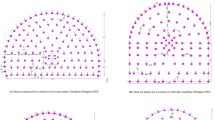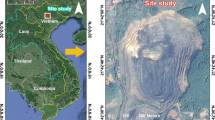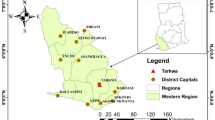Abstract
Blasting is important and an essential prerequisite in any opencast mine for fragmenting hard deposits. Blasting always produces unwanted effects like ground vibrations, noise and fly rock; among which ground vibrations effect is more on surrounding structures. Propagation of ground vibrations can lead to destruction of surrounding structures. Prediction of ground vibrations especially in terms of peak particle velocity is beneficial as opposed to conventional data monitoring techniques which can be expensive as well as time consuming. This paper uses predictors to estimate the intensity of ground vibrations and compares different methods of prediction methods like linear regression, multiple linear regression, non linear regression (NLR) and artificial neural networks. Intensity of ground vibrations generated from blasting operations was monitored in three different mines of limestone, dolomite and coal; obtaining about 168 ground vibration recordings in total. The statistical modelling or data-driven modeling has shown promise in the prediction of blast vibrations. Proposed a system of introducing site specific rock parameters like poison’s ratio, uniaxial compressive strength of rock and Young’s modulus to improve the correlation coefficient using statistical modelling (commonly called feature engineering in machine learning circles).






Similar content being viewed by others
References
Dowding CH (1985) Blast vibration monitoring and control. Prentice-Hall, Englewood Cliffs
Friedman J, Hastie T, Tibshirani R (2001) The elements of statistical learning, vol 1. Springer, Berlin
Hegde C, Wallace S, Gray K (2015) Using trees, bagging, and random forests to predict rate of penetration during drilling. In: SPE middle east intelligent oil and gas conference and exhibition, Society of petroleum engineers. doi:10.2118/176792-MS
Hino K (1996) Fragmentation of rock through blasting. J Ind Explos Soc 17(1):1–11
Hinzen KG (1988) Modelling of blast vibrations. Int J Rock Mech Min Sci Geomech Abstr 25(6):439–445
James G, Witten D, Hastie T, Tibshirani R (2014) An Introduction to statistical learning with applications in R. Springer, New York
Khandelwal M, Singh TN (2006) Prediction of blast induced ground vibrations and frequency in opencast mine: a neural network approach. J Sound Vib 289(4):711–725
Khandelwal M, Singh TN (2007) Evaluation of blast-induced ground vibration predictors. Soil Dyn Earthq Eng 27(2):116–125
Ram Chandar K, Sastry VR, Hegde Chiranth, Sreedharan Sreesharan (2016) Prediction of peak particle velocity using multi regression analysis: case studies. Geomech Geoeng, Jl
Sastry VR, Ram Chandar K (2004) Shocktube initiation for better fragmentation: a case study. Fragblast 8(4):207–220
Sastry VR, Ram Chandar K (2008) Assessment of blast performance based on energy distribution. In: Proceedings of 42nd American rock mechanics association conference, San Francisco, 29th June–2nd July 2008
Sastry VR, Teggi V, Ram Chandar K (2003) Shocktube initiation for eco-friendly blasting: a few case-studies. IE (I) J MN 83(1):40–46
Simpson PK (1990) Artificial neural systems: foundations, paradigms, applications, and implementations. Pergamon Press, New York
Siskind DE (1980) Structure response and damage produced by ground vibration from surface mine blasting. US Department of the Interior, Bureau of Mines, New York
Ulusay R, Hudson JA (eds) (2007) The complete ISRM suggested methods for rock characterization, testing and monitoring: 1974–2006. Suggested methods prepared by the ISRM Commission on Testing Methods. International Society for Rock Mechanics, Lisbon
Widrow B, Lehr MA (1990) 30 years of adaptive neural networks: perceptron, madaline, and backpropagation. Proc IEEE 78(9):1415–1442
Acknowledgements
The authors are thankful to the management of different mines for permitting to carry out the field investigations and also for their cooperation during the studies.
Author information
Authors and Affiliations
Corresponding author
Rights and permissions
About this article
Cite this article
Ram Chandar, K., Sastry, V.R. & Hegde, C. A Critical Comparison of Regression Models and Artificial Neural Networks to Predict Ground Vibrations. Geotech Geol Eng 35, 573–583 (2017). https://doi.org/10.1007/s10706-016-0126-3
Received:
Accepted:
Published:
Issue Date:
DOI: https://doi.org/10.1007/s10706-016-0126-3




